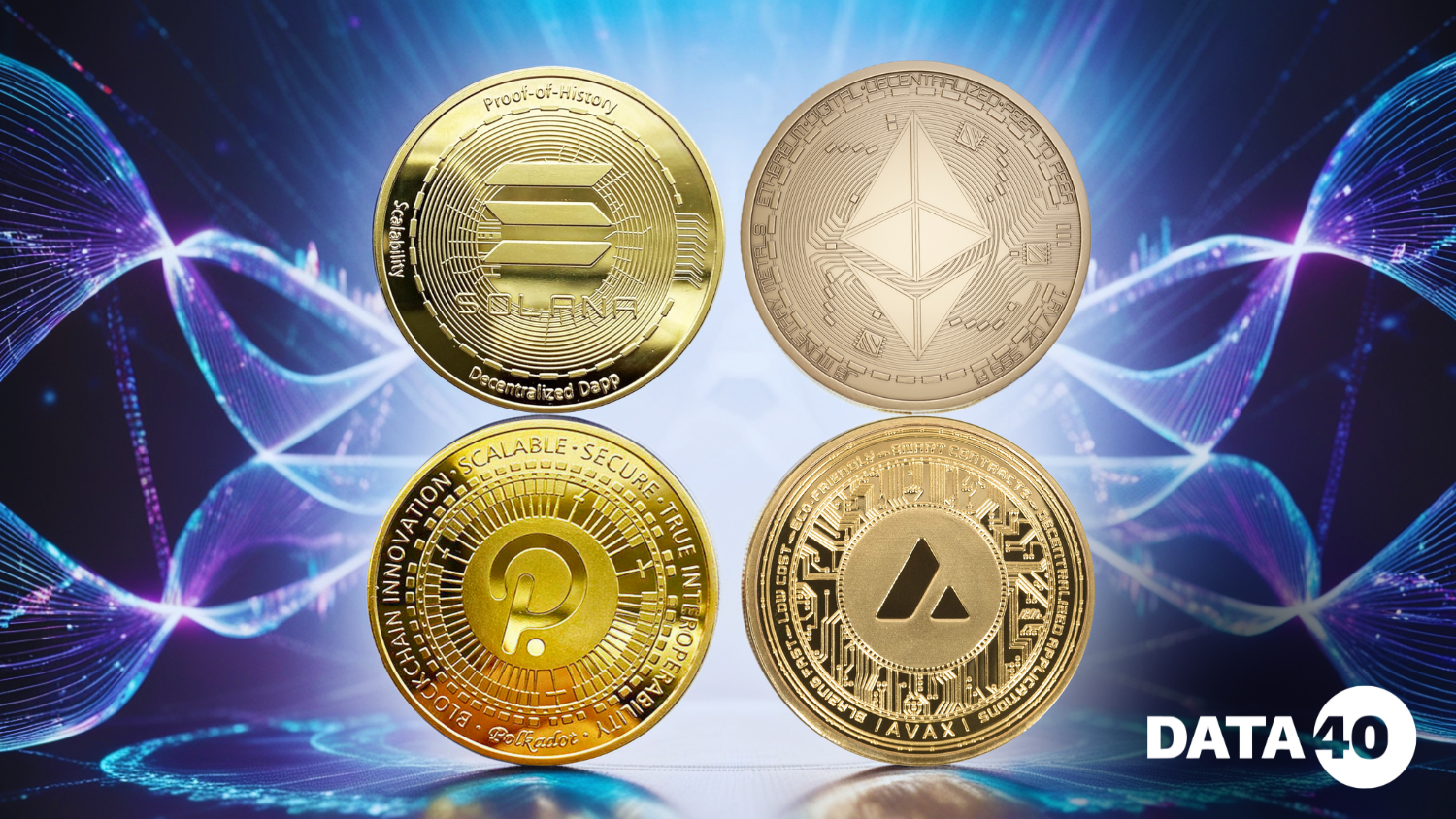

In the evolving world of blockchain technology, several platforms have emerged, each vying for dominance in the decentralized space. Among the leading contenders are Ethereum, Polkadot, Solana, and Avalanche. Each has its strengths and weaknesses, catering to different needs within the ecosystem. This article will provide an in-depth analysis of these four blockchains, exploring their core features, advantages, and limitations, and comparing them on key aspects such as scalability, security, consensus mechanisms, and developer ecosystems.
Ethereum: The Pioneer of Smart Contracts
Ethereum remains one of the most widely recognized blockchains in the world, known for its groundbreaking implementation of smart contracts. Launched in 2015 by Vitalik Buterin and his team, Ethereum laid the foundation for the decentralized application (dApp) ecosystem and the entire decentralized finance (DeFi) space. Its smart contract functionality allows developers to create decentralized applications that operate without intermediaries, providing a vast array of use cases across industries.
One of the key strengths of Ethereum is its robust and established network. With a vast developer base and a thriving decentralized finance ecosystem, Ethereum continues to dominate the blockchain space. It also has a strong network effect, as many applications and projects are built on its platform. Furthermore, Ethereum is transitioning from a Proof of Work (PoW) consensus mechanism to Proof of Stake (PoS) with its Ethereum 2.0 upgrade, which promises enhanced scalability and sustainability.
Ethereum faces significant challenges, especially regarding scalability. The network’s popularity has often led to congestion, causing slow transaction speeds and high gas fees. This has resulted in delays and frustration for users and developers alike. The transition to Ethereum 2.0, which aims to address these issues, has been slow, and it remains to be seen if it will fully resolve these scalability concerns.
Polkadot: Bridging Multiple Blockchains
Polkadot, created by Ethereum co-founder Gavin Wood, aims to solve one of the most pressing issues in blockchain technology: interoperability. Polkadot’s unique architecture allows different blockchains to communicate with each other, creating an interconnected ecosystem. This ability to facilitate cross-chain communication makes Polkadot highly versatile and scalable.
The key feature of Polkadot is its relay chain, which connects multiple parachains, or independent blockchains, to the main network. This design enables each parachain to have its own consensus mechanism and specific use case, making it easier to customize for different applications. Polkadot’s shared security model ensures that all parachains are secured by the relay chain, providing additional safety for the ecosystem.
Polkadot’s interoperability is a major advantage for developers who wish to create cross-chain applications or integrate with multiple blockchain platforms. Additionally, Polkadot has a strong governance system, where token holders can participate in decision-making, ensuring that the network evolves in a decentralized and community-driven manner.
Polkadot is still relatively new and has yet to achieve the same level of adoption as Ethereum. While the project has gained significant attention, it is still working on scaling its ecosystem and attracting more developers to its platform. The complexity of its architecture may also pose challenges for new developers who are not familiar with its unique features.
Solana: Speed and Scalability at the Forefront
Solana is one of the most exciting and innovative blockchain platforms in recent years. Known for its ultra-fast transaction speeds and high throughput, Solana has quickly gained popularity among developers looking for a scalable alternative to Ethereum. Solana can process up to 65,000 transactions per second (TPS), significantly outperforming Ethereum’s current capacity of around 15-30 TPS.
At the heart of Solana’s performance lies its unique Proof of History (PoH) consensus mechanism. PoH creates a verifiable order of events on the blockchain, allowing nodes to process transactions in parallel rather than sequentially, resulting in faster transaction processing. Combined with its Proof of Stake (PoS) system, Solana can achieve high scalability without sacrificing decentralization.
One of Solana’s major advantages is its ability to offer low transaction fees, making it an attractive choice for decentralized applications and decentralized finance projects. The platform’s high throughput and low costs have contributed to its rapid growth, with many DeFi projects and non-fungible token (NFT) marketplaces choosing Solana for their infrastructure.
Solana has faced security challenges. In 2021, the network suffered multiple outages due to technical issues, highlighting the risks associated with its complex consensus mechanism. These interruptions raised concerns about the platform’s reliability and long-term viability. While the team continues to address these issues, Solana’s security concerns remain a potential risk for developers and users.
Avalanche: A High-Performance Blockchain Network
Avalanche is a relatively new blockchain platform that has quickly gained attention for its high scalability and unique consensus mechanism. Similar to Polkadot, Avalanche aims to address the limitations of existing blockchain platforms by providing a highly scalable and interoperable solution. Avalanche supports decentralized applications, enterprise blockchain solutions, and custom blockchain networks.
The key innovation of Avalanche lies in its consensus protocol, called Avalanche Consensus. Unlike traditional consensus mechanisms like Proof of Work or Proof of Stake, Avalanche Consensus allows for highly parallel processing of transactions. This enables the network to process thousands of transactions per second while maintaining strong security and decentralization. Avalanche also utilizes subnets, which are customizable blockchain networks that can operate independently while still being part of the overall Avalanche ecosystem.
One of Avalanche’s key advantages is its focus on speed and scalability. The platform boasts extremely fast transaction finality, with transactions being confirmed in under a second. This makes it an ideal platform for applications that require high throughput and low latency. Avalanche also offers low transaction fees, making it an attractive option for developers looking to avoid the high costs associated with other blockchain networks.
Avalanche has demonstrated strong performance, but it faces challenges related to adoption and developer support. Although the platform has seen significant growth in recent months, it still lacks the large developer ecosystem and network effect that Ethereum enjoys. As with other newer platforms, Avalanche must continue to build its reputation and prove its reliability in the long term.
Key Takeaways: Strengths and Weaknesses
In comparing these four blockchain platforms, it’s clear that each has its own strengths and weaknesses. Ethereum, as the pioneer of smart contracts, remains the most established and widely used platform. Its transition to Ethereum 2.0 may address scalability concerns, but it faces challenges related to high gas fees and congestion.
Polkadot offers exceptional interoperability, allowing different blockchains to communicate and share data, but it is still in the early stages of adoption. Solana stands out for its speed and scalability, with the potential to handle thousands of transactions per second, though its security and reliability have been questioned due to past outages. Avalanche focuses on scalability and speed, with its unique consensus mechanism offering high throughput and low transaction fees, but it too must prove its long-term viability and developer support.
Looking Forward: The Future of Blockchain Platforms
When evaluating blockchain platforms, developers and investors must weigh their priorities based on use case and requirements. Ethereum remains a top choice for developers building decentralized applications due to its established ecosystem and network effects, but alternatives like Polkadot, Solana, and Avalanche offer compelling solutions in terms of scalability, speed, and interoperability.
Each blockchain has the potential to reshape industries and transform how decentralized applications are built and scaled. As blockchain technology continues to mature, it will be crucial for these platforms to address their respective weaknesses and foster strong communities that drive innovation. The future of blockchain will likely see greater collaboration and competition, where different platforms will complement each other, contributing to a more interconnected and efficient decentralized world.








